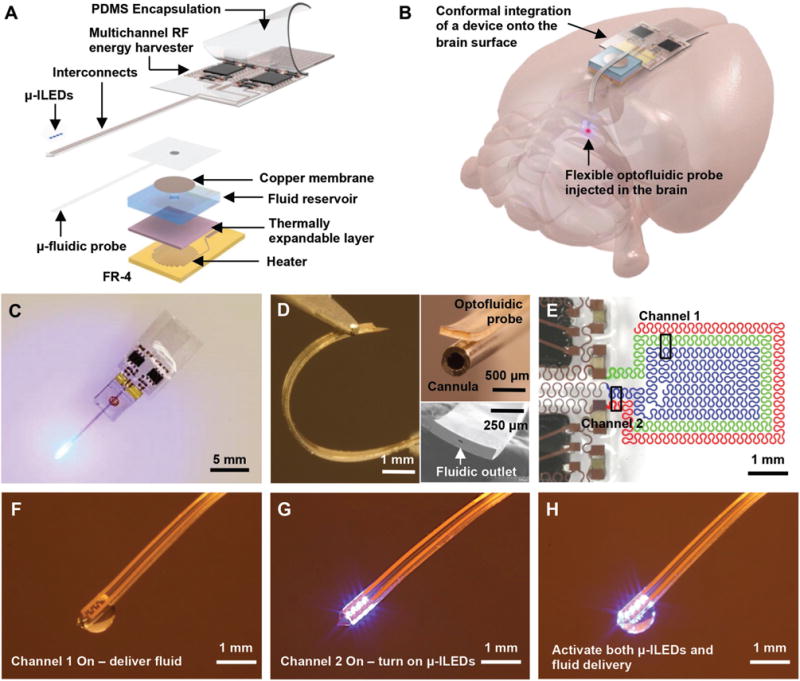Figure 1.

Design and operational features of fully implantable, battery-free, wireless optofluidic neural probe systems. A) Exploded view schematic illustration of a soft optofluidic system. B) Conceptual diagram illustrating conformal integration of the wireless optofluidic system and probe implantation in a rodent brain. The device can be oriented differently, depending on the location of the target brain region. C) Optical image of an optofluidic device to illustrate its fully wireless capabilities. D) Optical image of an optofluidic probe that illustrates the flexible mechanics (left). Optical image comparing sizes of the optofluidic probe and the traditional metal cannula (right top) and scanning electron image of the fluidic outlet at the tip of probe (right bottom). E) False-colored optical image of a stretchable RF antenna with two capacitive coupling channels. Optical images showing versatile controls of the optofluidic device for F) fluid delivery, G) μ-ILEDs, and H) simultaneous activation of μ-ILEDs and fluid delivery via a two-channel wireless energy harvester.
